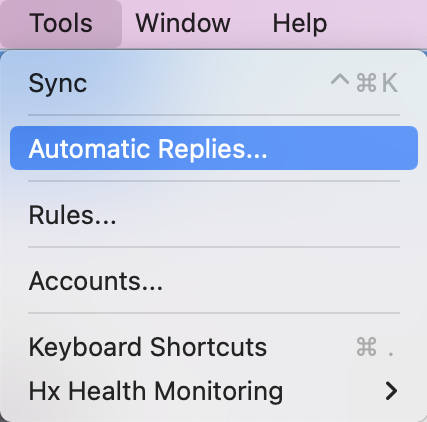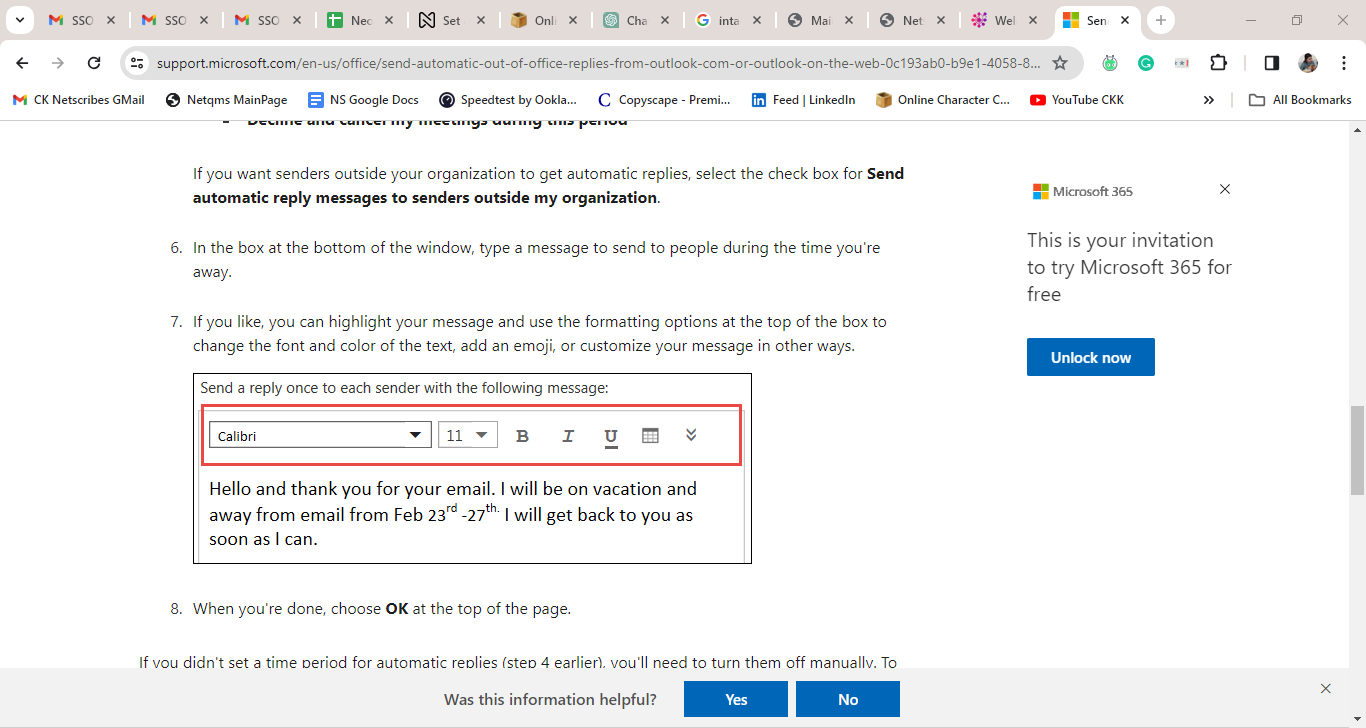
Get Business Email
No domain name required
Introducing
Microsoft Outlook is an important player in email communication, providing various features that boost productivity and simplify professional correspondence. With its straightforward interface, Outlook caters to the needs of countless professionals and provides a seamless platform. It aligns productivity with connectivity. The software system is about more than just sending emails. It is a versatile personal information manager with embedded features that bring together emails, calendars, contacts, and tasks in a user-friendly way.
One feature often underutilized but precious is the Out-of-Office (OOO) assistant. This comprehensive guide will explore the various dimensions of Outlook's Out-of-Office feature, uncovering its offerings on Windows, Mac, and online platforms.
Understanding the Features of Outlook
Before delving into the specifics of the Out-of-Office feature, let's take a moment to appreciate the array of features Outlook provides.
Smart reminders for attachments: A helping hand in completing emails.
Have you ever sent an email and realized you forgot to attach a crucial file? Outlook has a solution to avoid this common mistake – it’s an intelligent reminder feature. This feature is a gentle reminder to ensure you attach files before clicking “send.” It is a handy assistant that minimizes the chances of sending incomplete emails, making your communication more reliable and professional.
Tidy up with the “Clean Up” button: Declutter your workspace.
Decluttering your inbox has never been more straightforward. Outlook's Clean Up button streamlines the process, allowing you to remove redundant emails efficiently. Keeping only the unread or uniquely informative messages can transform your email management into a more organized and streamlined experience.
Seamless calendar updates: Your organizer at work
Imagine your travel and accommodation plans effortlessly syncing with your calendar—no manual entry required. Outlook's efficiency shines through as it automatically integrates flight and hotel reservations into your calendar. This saves time and ensures that your schedule remains up-to-date and organized through minimal effort.
Efficient management: Taking charge of email conversations.
Being added to a common distribution list is quite common in larger organizations. Instead of individually deleting each message in the ongoing conversation, a more straightforward solution is available. You can opt not to receive any more messages from that conversation. All existing messages will be moved to the “Deleted Items” folder, and any future messages in that conversation will skip your “Inbox” and go directly to the same folder.
Tailored alerts with new item notifications: Stay in the know.
Maintaining control of your inbox becomes easier with Outlook’s “New Item Alerts.” This feature empowers you to set notification criteria. Whenever an incoming message aligns with these specifications, Outlook promptly notifies you. This tailored approach ensures you never miss critical emails amidst the hustle and bustle of a busy inbox.
Multi-window efficiency: Boosting productivity.
This innovative feature of Outlook enables efficient multitasking, empowering users to navigate and manage various facets of their professional responsibilities concurrently and seamlessly. Whether staying on top of emails or tending to diverse work demands, the multi-window feature ensures that organizational integrity is maintained while allowing for a streamlined workflow.
Mention with the @ symbol: A twist to communication
Outlook offers a modern approach to communication with the “@” symbol. You can initiate a series of interactive features by simply typing “@” followed by a name. The recipient’s name is also added to the “To” line and highlighted in the message body. It is a smart and engaging way to ensure your messages capture attention in a busy digital landscape.
Out-of-office in Outlook: Everything you Need to Know
In professional interactions, Microsoft Outlook’s Out-of-Office (OOO) feature plays a crucial role, quietly ensuring smooth communication when you step away. It is not just a tool that generates your notice of unavailability. The feature informs your colleagues and clients and upholds professionalism during your absence.
A reliable communication guard
Out-of-Office in Outlook is a digital shield that automatically responds to incoming emails when you are away. It lets people know you are unavailable and offers alternative contacts or necessary information. This proactive feature minimizes the risk of miscommunication during your absence, preserving your business connections.
Crafting customized responses
What makes Outlook’s Out-of-Office feature stand out is its customization options. You can create personalized messages tailored for different groups. Whether it's a casual note for colleagues within your organization or a more formal message for external contacts, Outlook allows you to communicate your absence with professionalism.
Seamless across platforms
Setting up Out-of-Office is a breeze, regardless of your platform. On Windows or Mac, the process is user-friendly. The online version of Outlook adds an extra layer of convenience, allowing you to manage your absence settings from anywhere with an internet connection. This adaptability ensures a consistent and hassle-free experience.
Crafting an effective Out-of-Office message is not just about saying you are away. It is also about maintaining professionalism. Your communication should express your absence, offer alternative contacts, and establish transparent expectations for your comeback. Using clear and concise language ensures that your absence is communicated in a manner that reflects positively on your professional image.
Enhancing work efficiency
Outlook's Out-of-Office feature is more than a courtesy. It is a tool that empowers you to navigate your professional life with ease. Efficiently handling your emails and providing clear communication during your absence ensures that your work environment remains organized and tasks are appropriately delegated.
Avoiding miscommunications
Notifying colleagues, clients, and collaborators about your absence is simple and can ensure understanding. Out-of-Office acts as a proactive measure. It minimizes the risk of miscommunications and ensures everyone knows your unavailability.
Respecting your professional presence
Ultimately, the Out-of-Office feature is about more than just signaling your absence. The notification feature helps maintain your professional presence even when you are physically away. By utilizing this feature effectively, you demonstrate a commitment to clear communication and professional etiquette.
How to Set up Out-of-Office in Outlook : 8 Easy Steps
Follow the below steps to set out-of-office in Outlook for Windows:
1. Open Outlook & click on the “View” tab.
2. Look for "View Settings."
3. In “View Settings,” find "Accounts"
4. then click on "Automatic Replies."
5. Turn on the "Turn on automatic replies" switch.
5. Choose "Send replies only during a time period"
6. Select the timeframe
7. Under "Send automatic replies inside your organization," type the message.
8. Click on “Save” to make sure that the feature gets activated.
Spotlight on Mac: Crafting Out-Of-Office Communication in Outlook
Bonus: Here is how you can set out-of-office in Outlook for Mac:
- Click on “Mail” in the lower-left corner of the navigation pane.
- Go to the “Tools” tab and choose “Automatic Replies.”

- Choose the email account for which you want to set up automated replies.

- Type your reply under “Reply once to each sender within my organization.”
- To specify when these replies should be sent, check the box that says “Send replies during this time period.” Enter the start and end dates and timings.
- If your Exchange administrator permits, you can reply to people outside your organization. Choose between sending replies only to your contacts or to all external senders. Then, enter your automated reply for those outside your organization.
- Click “OK” to save your settings.
Navigating Out-Of-Office in Outlook Online
Follow the steps below to set out-of-office in Outlook for Web:
- Click on “Settings” at the top of the page, then go to “Mail” and select “Automatic” replies.
- Turn on the “Automatic” replies.
- Choose the option to “Send” replies only during a specific time by checking the box and entering the start and end times.
- If you decide not to set a specific time, your automated reply will stay activated until you turn it off manually by toggling on the “Automatic” replies switch.
- In the text box at the bottom, compose the message you want to send to people while you are away. Feel free to use the formatting options to customize the appearance of your message.

- If you want those outside your organization to receive automated replies, select the checkbox for “Send replies outside your organization.”
- Once everything is set, click “Save” at the top of the window to apply your changes.
Things to Keep in Mind:
Setting up Out-of-Office messages in Outlook is a simple and essential task to ensure smooth communication during your absence. Here are some key considerations to keep in mind:
Clarity is critical.
Ensure that your Out-of-Office message is clear and concise. Communicate that you are away and provide relevant details, such as the duration of your absence.
Professional tone:
Maintain a professional tone in your message. Even if you add a touch of friendliness, conveying a sense of reliability and competence to those reaching out to you is essential.
Include alternative contacts.
If applicable, provide information about alternative contacts or resources the sender can contact for assistance during your absence. This helps in redirecting inquiries appropriately.
Time frame specification:
Specify the start and end dates of your absence. This ensures clarity regarding the applicability of your Out-of-Office message and your expected return time.
Avoid over-sharing
While providing all the necessary information is essential, avoid over-sharing personal details in your Out-of-Office message. Stick to relevant information to maintain a balance of transparency and privacy.
Bonus: Also learn how to setup out of office in gmail.
Wrapping up
In a realm where effective and ongoing communication is crucial, Outlook's Out-of-Office feature is an unsung hero. It enables professionals to step away without compromising connectivity. The feature allows you to stay connected across various platforms, ensuring that your absence does not translate to missed opportunities or confusion in your professional network. Whether planning a vacation, attending a crucial meeting, or simply stepping away for a day, empower yourself with the knowledge of setting up Out-of-Office in Outlook. It is key to seamless communication in your absence.

Get Business Email
No domain name required





.svg%201.svg)
.svg)
.svg)
.svg%201.svg)



